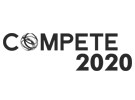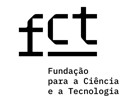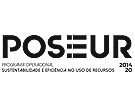



Publication in the Diário da República: Despacho n.º 7795/2021 - 09/08/2021
6 ECTS; 3º Ano, 2º Semestre, 28,0 T + 42,0 PL , Cód. 911258.
Lecturer
- Carlos Alberto Farinha Ferreira (1)(2)
(1) Docente Responsável
(2) Docente que lecciona
Prerequisites
Not applicable.
Objectives
Develop dynamic models to characterise the mechanical load, electrical machine, electronic converter and power supply;
Designing and analysing the performance of industrial drives and electric traction vehicles, in accordance with the specific requirements set by the load and power supply; Designing and dimensioning command and control solutions for drive systems, using power electronic converters, based on rotating electric machines (direct current, asynchronous and synchronous).
Program
1. Constitution of an electromechanical system;
1.1 Introduction to electromechanical systems;
1.2 The electric vehicle - constitution and specific characteristics of electric vehicles;
2. Modelling the stationary and dynamic behaviour of industrial mechanical components;
2.1 Mechanical elements;
2.2 Equations of motion;
2.3 Typical loads;
2.3.1 Rigid and elastic linkage;
2.3.2 Gearbox;
2.3.3 Pumps and fans;
2.3.4 Reels;
3 Specific characteristics of electric vehicles;
3.1 Equations of motion;
3.2 External forces;
3.2.1 Wheel model;
3.2.2 Resistant forces;
4. Applications of control systems in electromechanical drives;
4.1 Direct current machines;
4.2 Three-phase asynchronous machines;
4.3 Synchronous machines;
5. Power supply for electric traction systems;
5.1 Batteries;
5.1.1 Analysing the different types of batteries;
5.1.2 Battery parameters and technical characteristics;
5.1.3 Battery modelling;
5.2 Alternative systems;
5.2.1 Fuel cells;
5.2.2 Supercapacitors;
5.2.3 Flywheels;
6. Power chain in electric vehicles (EVs) and hybrid electric vehicles (HEVs);
6.1 Transmission components;
6.2 Power chain dimensioning;
6.3 Regenerative braking;
6.4 Analysing the consumption and range of EVs and HEVs;
Evaluation Methodology
The assessment consists of two parts, namely a written test (i) and practical work to be carried out during the semester (ii). Both parts (i and ii) are worth 50 per cent of the final grade. Approval in the course requires a mark of 10 or more in the written test (i).
Bibliography
- Dente, A. e Palma, J. (2008). Accionamentos Electromecânicos de Velocidade variável. (Vol. 1). Portugal: Fundação Calouste Gulbenkian
- Gillespie, T. (2021). Fundamentals of Vehicle Dynamics, Revised Edition. EUA: SAE International
Teaching Method
Lectures and theoretical-practical classes focused on the analysis and solving of practical cases.
Software used in class
Not applicable.


















